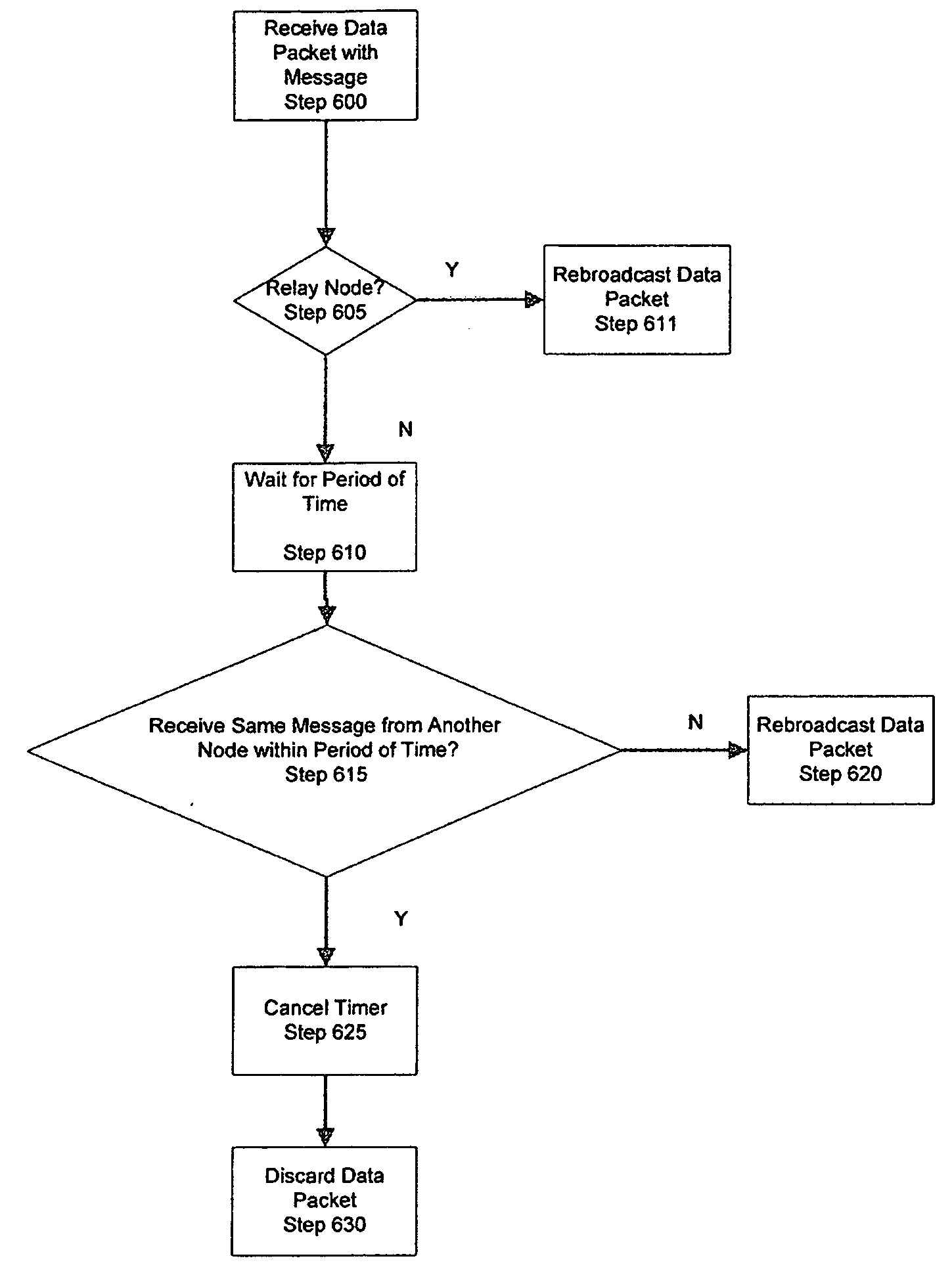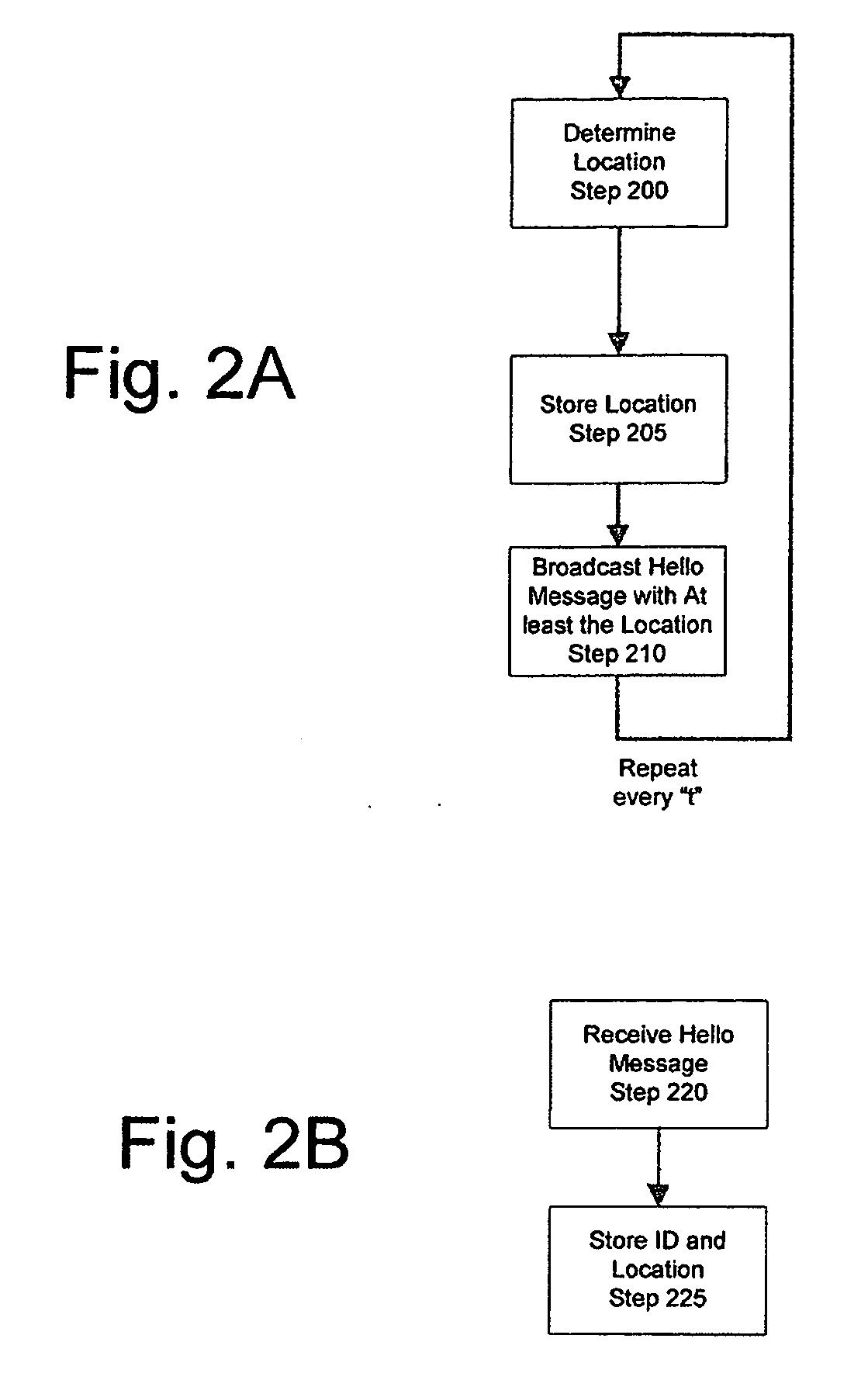Method of broadcasting packets in ad-hoc network
a wireless network and packet technology, applied in the field of ad-hoc wireless networks, can solve problems such as interference between data, significant transmission delay, and radio wave jamming
- Summary
- Abstract
- Description
- Claims
- Application Information
AI Technical Summary
Problems solved by technology
Method used
Image
Examples
first embodiment
[0055]FIG. 4 illustrates a flow chart for a method of originating a data packet and broadcasting the data packet according to the invention.
[0056]According to the first embodiment of the invention, a node that originates a data packet selects only one node from all of the neighboring nodes to relay the data packet, i.e., a first relay node. The first relay node is selected to be the furthest neighboring node from the originating node.
[0057]At step 400, the originating node determines the data or message for broadcast, e.g., type. There are many types of messages that can be broadcast, such as, but not limited to, emergency warnings, collision message, vehicle approaching warnings, and overhead clearance information.
[0058]At step 405, the originating node calculates its distance from each neighboring node. The distance is calculated using a calculation method that is described later in detail. At step 410, the originating node selects the relay node. As stated above, the relay node i...
third embodiment
[0063]FIGS. 5B and 5C illustrate methods for determining a distance between the originating node and each of its neighboring nodes according to a second and third embodiment of the invention.
[0064]Both of these methods account for the motion of the nodes. These methods assume that the nodes are moving at approximately the same speed. Additionally, these methods assume that the nodes have synchronization in time for both the clocks and position information, i.e., GPS devices are synchronized. Therefore, the originating node estimates the current position of each neighboring node based upon its own speed. In other words, the estimation of a neighboring node's current position is based upon the nodes likely displacement from its previous position, which is known. The previous position is taken directly from storage. The likely displacement is calculated based upon an estimated velocity and time difference.
[0065]As illustrated in FIG. 5B, the originating node retrieves its position from...
fourth embodiment
[0070]FIG. 5D illustrates a method for determining a distance between the originating node and each of its neighboring nodes according to the invention.
[0071]According to this embodiment, the Hello message includes at least a unique identifier, position information, the time of calculation and the speed of the node that sends the Hello message. The routing table 300 includes for each neighboring node, the unique identifier, position information, the time of calculation, and the speed. Further, according to this embodiment, the position estimation is based on the speed of the node itself and not the speed of the originating node, and, therefore, there is no assumption that all nodes are traveling with the same speed.
[0072]At step 575, the originating node determines its current position (CX1, CY1, CZ1). At step 580, the originating node retrieves the position information, speed, and time for each neighboring node from the storage section 110, e.g., (SXn, SYn, SZn). Using the stored p...
PUM
 Login to View More
Login to View More Abstract
Description
Claims
Application Information
 Login to View More
Login to View More - R&D
- Intellectual Property
- Life Sciences
- Materials
- Tech Scout
- Unparalleled Data Quality
- Higher Quality Content
- 60% Fewer Hallucinations
Browse by: Latest US Patents, China's latest patents, Technical Efficacy Thesaurus, Application Domain, Technology Topic, Popular Technical Reports.
© 2025 PatSnap. All rights reserved.Legal|Privacy policy|Modern Slavery Act Transparency Statement|Sitemap|About US| Contact US: help@patsnap.com



